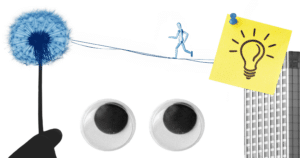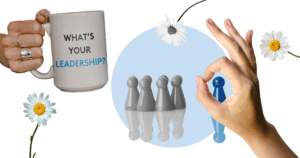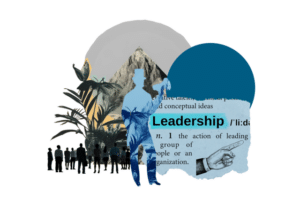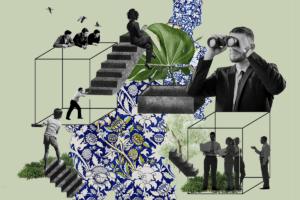The development of Diversity & Inclusion matters in companies has by now been a popular topic for decades. Today, it is difficult to find a company that does not talk about inclusion and diversity. The commitment to embracing diversity as a value and the efforts towards corporate inclusion also increase the sense of belonging to the organization over time. A culture centered around the sense of belonging is not only a value in itself, but also a driving force for employee engagement, a way to increase productivity, enhance the company's reputation, and a lever to attract the best talent.
But what does Diversity & Inclusion mean exactly? Diversity exists and it has to be considered in a company. However, to exist, there must also be something such as ‘non-diversity’, i.e. something we consider mainstream. But what is mainstream in the West? A caucasian man around 40 years of age. Hence the figure represented in science textbooks when talking about homo sapiens?
Of course, this way of thinking is totally dysfunctional, since there are very few companies made up exclusively by 40 year old caucasian male employees.
Organizations count a variety of people and profiles, and, even this is even without considering different cultures, genders, religions, health, people are different simply because they are living different stages of life.
By looking at the generational variety in today’s organizations we discover that for the first time in history there are 4-5 generations working side by side, and this variety already carries with it a huge challenge on how to create a productive collaboration.
Imagine, for instance, a pre-Covid scenario in which a gen-Z girl is just starting her professional career. What an excitement! Her first work experience! Throughout her first two workdays, she has already posted many selfies around the company corridors on her Instagram profile. To help her is a gen-Y young man, born in 1993, on his third round of apprenticeships. To the HR Business Partner and her boss, he says: ‘I would like to receive frequent feedback on my performance. How may I grow and learn more?’ ‘What do you mean?’ thinks in disbelief his boss, a Gen X lady. ‘You want us to meet to reflect on everything we do? To which end?’ The lady, born in 1977, is in emotional turmoil. She is moving up the ladder and is in a hurry. She has little time to waste in general. Her children will be home from school in a few hours and she will have to think about them and the house, dinner included.
A Baby Boomer, born a few years after the war, walks down the corridor. He is secretly waiting for retirement, although he still has a few years of work ahead and does not like to talk about the subject. He is too busy proving his total dedication to work. He does not understand the Y young man and the X lady’s individualism, personal growth, and career development. Always thinking about themselves…
The Baby Boomer is going to an older colleague’s office -one who has seen everything in life – he says. He belongs to that group of people born before 1945, who do not want to retire. What counts for them are clear roles, hierarchy, tangible results, and wanting to work until the day they die.
Although predominantly Italian, white, and Catholic, all these people belong to 5 different worlds, each with its own values, ideals, and stages of life. The issue of diversity becomes conceptually complex, elusive, and difficult to grasp. In the end, the simple truth is that “I am different, regardless of how I seem”.
The value we can give to diversity comes from recognizing the useful contribution that each person can make to the organization. What does each person do and how else can they contribute? What could they excel further at?
Inclusion and sense of belonging in the Covid-19 era
With regards to the theme of inclusion, Covid-19 has opened a new chapter.
The younger people do not struggle to adapt to the new digital way of working from a technical point of view. To them it comes naturally, they were born in the digital era. However, the lack of reference points in a tangible organizational context, makes it hard to keep the people close – especially those who have only recently entered the company – and build a sense of belonging.
From our observatory as Business Coaches, we can witness how difficult it is to integrate new and young resources into organizations during this historic moment. When people start working in an organization they do not simply learn the tasks to be carried out, but also the methods, practices, and habits. It is easier to build relationships with people physically located in close proximity, by asking for advice, sharing ideas, and learning things by seeing and talking with colleagues.
If the gen-X lady was stressed, she has now reached the brink of exhaustion. Now everyone is working from home, and while she has a call with the office and clients, the X lady also has to manage her children who study from home. The lady is getting more and more tired, however, this time there is no venting in front of the coffee machine. Everyone is therefore forced to deal with their own difficulties.
Meanwhile, Mr. Baby Boomer is still wondering how to manage the relationship with clients and his team in these conditions, hoping to go back to normality soon. The veteran who had no intention of retiring has finally come to the conclusion that now is precisely the moment to retire. Even his wife’s company is better than learning all these new ways of communicating.
In conclusion, even in this era, we are all different, although we are all affected by the consequences of the same virus. However, could this be the element that brings us together? Surely, it is a moment where we all should be actively mindful of the fine line between including and being included. More than ever, there is a need for effective leadership and a corporate culture that encourages a sense of belonging, making people responsible for their own actions, their own destiny, their own participation. Diversity & Inclusion, therefore, persists in being relevant and further enriched by new dimensions. What does not change, however, is that the difference is made by people’s behavior in their daily lives. The question to be answered was and remains: “What can I do to facilitate the inclusion of others and to be included, thus creating a greater sense of belonging for everyone?”.






